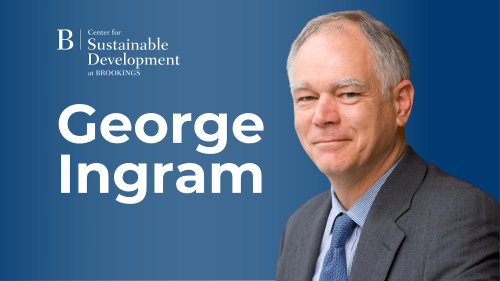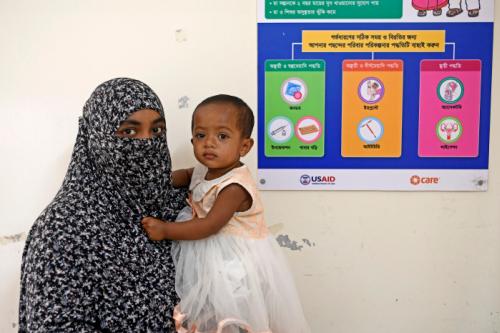Editor’s Note: Khalid Koser recently returned from a field visit to Afghanistan and Pakistan, assessing the potential displacement implications of the withdrawal of the majority of International Security Assistance Force troops from Afghanistan at the end of 2014. This is the first in a three part series on the changes to humanitarian needs and responses that may be expected over the next year in Afghanistan. The second posting provides an overview of the displacement scenarios and the third analyzes the likely increase in internal displacement.
The dissonance between the debate inside and outside Afghanistan concerning prospects for the next year or so is striking.
Among the international community there has been a strong emphasis on the security transition. Most commentators believe that the Bilateral Security Agreement will eventually be signed and that the ‘zero option’ that no US troops will remain in the country is unlikely to materialize. But it is still unclear how many troops will stay in Afghanistan after 2014 and what their role will be. This matters because confidence in the ability of the Afghan National Security Forces to provide security is low. Challenges include attrition, insurgent infiltration, substance abuse and illiteracy. Certainly the Afghan army and police will require significant international funding and support.
Security is clearly recognized as an imminent concern by humanitarian actors in Afghanistan. But in forecasting displacement scenarios in Afghanistan over the next year, as well as impacts on Afghanistan’s 600,000 internally displaced, 2.5 million refugees and over five million returnees, many people within Afghanistan feel that there are two other transitions that are equally as important as the security transition.
The first is the political transition. Presidential elections are scheduled for April 5, 2014, when President Karzai will be required by the Afghan Constitution to step down. There is no obvious candidate able to command the allegiance of the broad mass of the population. The previous presidential and parliamentary elections were marred by significant irregularities and there is currently little public confidence in the process, although the recent establishment of election and complaints committees has allayed some concerns. In anticipation of a period of political uncertainty, there is much jockeying for position amongst the multiple power holders, some of whom are forming political parties in an attempt to build alliances and claim legitimacy. The Taliban may also become participants in the political process.
Secondly, an economic transition is also underway. The World Bank has predicted that the recent quite impressive rate of economic growth in Afghanistan will not be sustained after 2014. In particular, political and security uncertainties undermine business confidence. It has also been estimated that the planned foreign troop withdrawal by the end of 2014 will directly lower annual growth by two or three percentage points, as a result of reduced local spending by these forces and by the concurrent withdrawal of foreign civilian organizations with international and national staff. In addition, while traditional donors such as the European Union have provisionally committed to supporting Afghanistan beyond 2014, they have made it clear that aid will be conditional on improvements in governance and a reduction in corruption, which few analysts believe can realistically be achieved.
What has not yet received sufficient attention either inside or outside Afghanistan however, are the implications of these multiple transitions for Afghanistan’s citizens, including the millions already displaced inside and outside the country.
What has not yet received sufficient attention either inside or outside Afghanistan however, are the implications of these multiple transitions for Afghanistan’s citizens, including the millions already displaced inside and outside the country.
Recent months have witnessed both rising civilian casualties and spread of insurgent activities. While the military capacity of the Taliban is debated, the Afghan National Security Forces is unlikely to be able to maintain security across the country in the face of a resurgence of Taliban attacks. Afghans who have worked directly with International Security Assistance Force are likely to be particular targets. The political transition is also likely to be linked with insecurity. Most analysts predict that the failure to conduct a free and fair vote will result in political violence pitching Karzai’s supporters against those of viable contenders for the position. The involvement of the Taliban in any political settlement risks reversing years of progress on women’s rights. And even a legitimately elected government is unlikely to have the capacity seriously to address the corruption, warlordism and absence of rule of law that currently make so many Afghans feel uncertain about their future prospects. The economic transition will likely also further jeopardize the livelihoods of hundreds of thousands of Afghans. It has been estimated that the closure of the Bagram base alone will result directly in 50,000 Afghans losing their jobs – an impact magnified by the fact that in Afghanistan today a single income is estimated to support up to five families. The expected devaluation of the Afghan currency will also affect the purchasing power of Afghans; the devaluation of the Iranian rial as a result of sanctions also means that the value of remittances from Afghan workers in Iran, on which many hundreds of thousands of families rely, is also declining.
As explained in the next postings in this series, taken together, these security, political and economic factors make prospects for significant returns from Iran and Pakistan of Afghanistan’s millions of refugees very unlikely in the near future; they are likely to prompt further migration and displacement within and outside the country; and they will reduce the already very limited capacity of the government to cope with the challenges of internal displacement.
Moreover, the humanitarian impacts of the transitions in Afghanistan in 2014 are also likely to be compounded by their direct effects on the ability of the humanitarian community to respond. First, humanitarian access is likely to decrease. According to the UN Office for the Coordination of Humanitarian Affairs (OCHA), active hostilities continue to impede delivery of assistance to affected people in Afghanistan. As of May 2013, access by the UN refugee agency had been reduced to about 70 percent of the country and it often out of reach for displaced people. Secondly, security for humanitarian workers is likely to be jeopardized. According to OCHA, during the first quarter of 2013 there was a 63 percent increase in security-related incidents associated with humanitarians over the same period in 2012; and in the last few months there have been attacks on health facilities managed by NGOs, the Kabul office of the International Organization for Migration and the Jalalabad office of the International Committee of the Red Cross. Third, even as the prospects for needing to protect and assist more displaced people are likely to increase and humanitarian access and security are likely to become more difficult, international commitment to support humanitarian activities in Afghanistan is decreasing. The UN’s Emergency Relief Coordinator recently observed that last year’s humanitarian appeal for Afghanistan was less than fifty percent funded.
What needs to be done? First, awareness needs to be raised of the humanitarian consequences of the transitions facing Afghanistan, including displacement. Secondly, while the international community can have little direct influence over security threats to its staff, helping to promote and maintain a perception of ‘neutrality’ of the UN within Afghanistan is important, especially in light of the increasing violence against people associated with international organizations. Thirdly, there is a need to highlight to donors the need for sustained support for humanitarian and development activities in Afghanistan and the sub-region, delinked from military and political agendas and processes.
The Brookings Institution is committed to quality, independence, and impact.
We are supported by a diverse array of funders. In line with our values and policies, each Brookings publication represents the sole views of its author(s).



Commentary
Afghanistan 2014: Preparing for the Humanitarian Transition
August 28, 2013